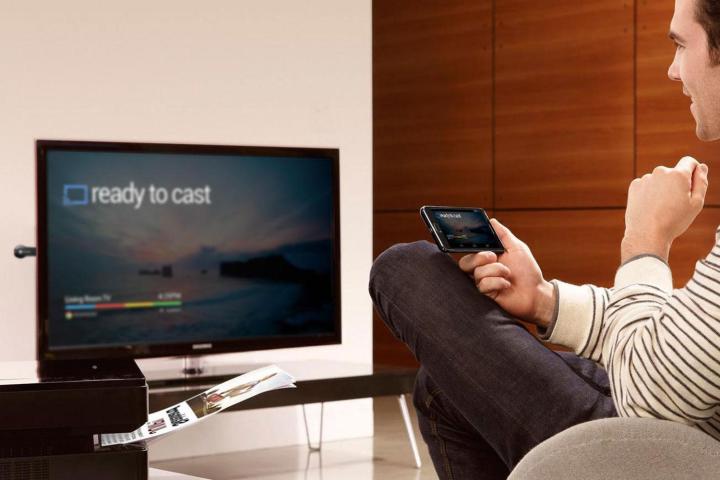
The benefits of the Chromecast Preview Program are myriad, Google explained on the program’s support page. Not only does it afford you the opportunity to “test drive [new] features,” but it provides enrollees the chance to “give early feedback” and “stay up to date” with the latest software. Lest you be concerned about those experiments’ impact on the stability of your Chromecast, though, Google assured that the software is a bit less bug-prone than your typical beta. “Our intention is that … updates will be of the same quality as production version updates,” Google said. “You’re simply getting early access to new features before they’re released broadly.”
Chromecast, for the uninitiated, is a diminutive dongle that you plug into the back of a television, projector, or any other device with a spare HDMI port. It connects to your local Wi-Fi, cellular, or Ethernet-based network and lets you stream content from hundreds of sources. That’s no exaggeration — Hulu’s among the list of more than 10,000 apps that support Google’s streaming platform, as are Spotify, Netflix, Pandora, iHeartRadio, YouTube, and Twitch. But that is just the tip of Chromecast’s functionality iceberg: the versatile Chromecast supports the streaming of local content like photos and videos, too, plus games like Just Dance Now and Angry Birds Friends. And on supported smartphones, tablets, and computers, you can even mirror your device’s content.
It has been a resounding success. As of late July, Google’s sold more than 30 million Chromecast units, besting both the Apple TV and Roku’s latest boxes for 35 percent of the total streaming device market. And that momentum is likely to grow. The company partnered with Vizio to tie Chromecast functionality tightly into its current and future lines of TV. Google also debuted a new version of the Chrome browser with Chromecast software built in and will reportedly release a new Chromecast model in the coming weeks with support for 4K video.
Opting into the Chromecast Preview Program is a relatively straightforward affair, as the support page explains. Open the companion Cast app for Chromecast, tap the Devices tab, select the Device Settings button from the drop-down menu, and you will see an entry for the Preview Program. From there, you have the option of enrolling and the chance to sign up for email notifications every time new preview firmware is released.
Both the first and second generation of Chromecast devices are eligible for the Preview Program, as is Chromecast audio, the audio-only streaming device for audio receivers and standalone speakers.
It is not the first public beta program Google has rolled out in recent months. In May, the search giant launched the Android Beta Program, a public test that granted intrepid users ongoing access to newer, unpolished builds of the company’s mobile operating system.
Editors' Recommendations
- Google is expanding Fast Pair, casting to more devices
- Google ends support for the original Chromecast
- Chromecast with Google TV makes the leap to Android 12
- Google’s new Chromecast is cheaper, tops out at HD resolution
- Google Chromecast tips and tricks to make you a master caster


